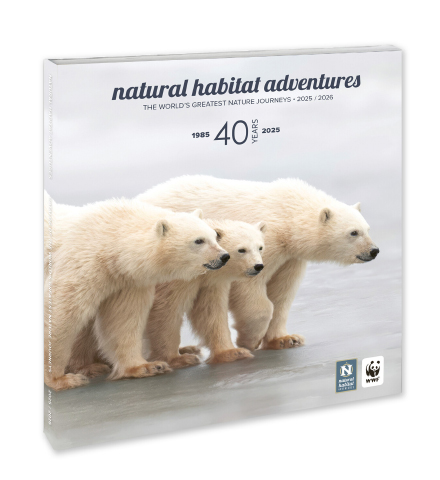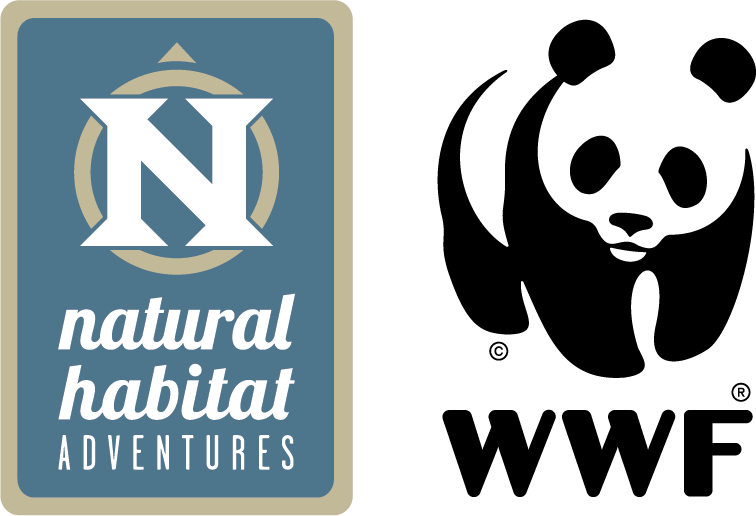By Samuel Littauer, Development Officer at World Wildlife Fund
Alaska has always carried a certain mythos in my mind—its rugged wilderness, untamed landscapes, and wildlife larger than life itself. For years, I heard tales of its vast beauty and isolation, as though it were a last frontier where nature still reigns supreme. But it wasn’t until I traveled there, to Natural Habitat’s Bear Camp in Lake Clark National Park, that I truly understood the reputation Alaska holds. It was here, surrounded by towering mountains, wild rivers, and the iconic coastal brown bears, that I saw firsthand why this land captures the imagination and inspires a deep reverence for the natural world.

© Samuel Littauer / WWF-US
Before Lake Clark National Park was officially established in 1980, this region was preserved for millennia by the Dena’ina Athabascan people, who referred to it as Qishjeh Vena, meaning “a place where people gather.” This term captures the essence of what this land represents—not only a sanctuary for bears and other wildlife but also a gathering place for people who come to experience the wild beauty of Alaska.
The true magic of Bear Camp lies in the intimacy it fosters with the bears and their environment. This is not a place where you simply observe wildlife from a distance; it is a place where you feel part of the landscape. The sight of a large male bear digging for clams on the tidal flats, the smell of the saltwater air, and the sound of the wind through the trees—all of it creates a deep sense of connection with the wilderness around us.

© Samuel Littauer / WWF-US
Our days began with quiet anticipation as we ventured into the meadows and tidal flats to observe the bears as they started their morning feasts. These coastal brown bears can weigh up to 1,500 pounds before entering their winter torpor. During the summer, they feast on clams among the salt flats and graze on sedge grasses that flood the fields beyond our accommodations. The riparian environment provided a true smorgasbord for the bears, while also setting the stage for observing every imaginable bear behavior.
Bear Camp’s close proximity to the world of these giants allowed us to feel personally connected to the storylines that unfolded across the fields. Families of bears would roam together, occasionally fleeing an aggressive male or, in some cases, welcoming his advances. Rival males competed for mates, giving us a glimpse into the intricacies of bear society.
One afternoon, our group spent time admiring the bears as they gathered across the sedge fields for a leisurely snack. Suddenly, a sizeable male bear paused his feast to take a dip in the river running through the heart of the fields. We stood still, holding our breath to better hear him as he cooled off after a long day of wrestling matches and indulging in the lush offerings of the valley. Another bear soon approached, seeking the same cool respite, which led to an intense wrestling match before one claimed the river. It was a scene of whimsy and survival, a reminder that life here, though majestic, is also fragile.
While observing the bears of Lake Clark, it was not lost on me that similar neighboring ecosystems have been in jeopardy for decades. The headwaters of Bristol Bay, several hours west of Lake Clark, have long been threatened by the potential development of Pebble Mine. Nearly half of the world’s sockeye salmon comes from Bristol Bay, supporting a $2.2 billion fishing industry and employing 15,000 people. World Wildlife Fund partnered with the Bristol Bay Victory Challenge, an Indigenous-led fundraising initiative to block the Pebble Mine for good. In 2022, this initiative established a 44,000-acre conservation easement, protecting critical habitat and securing a brighter future for local communities that have lived harmoniously with this landscape for generations.

© Samuel Littauer / WWF-US
As I departed Bear Camp, I carried with me more than just memories of brown bears and the vast Alaskan landscape. I left with a renewed sense of responsibility to advocate for the protection of these precious lands and their inhabitants. The bears, the land, and the people who have lived in harmony with this wilderness for generations remind us that nature’s balance is fragile—and it is up to us to ensure it endures.
For me, this experience among the bears, on the ancestral land of the Dena’ina people, underscores the need to protect these last strongholds of nature. The conservation of land, to ensure the protection and flourishing of both people and wildlife, is imperative to creating a harmonious world where both can thrive. It’s in the Alaskan wilderness, among the bears, in places like Lake Clark, that people arrive in a gathering place and leave enchanted by the wild world to which we all belong.

© Samuel Littauer / WWF-US


























